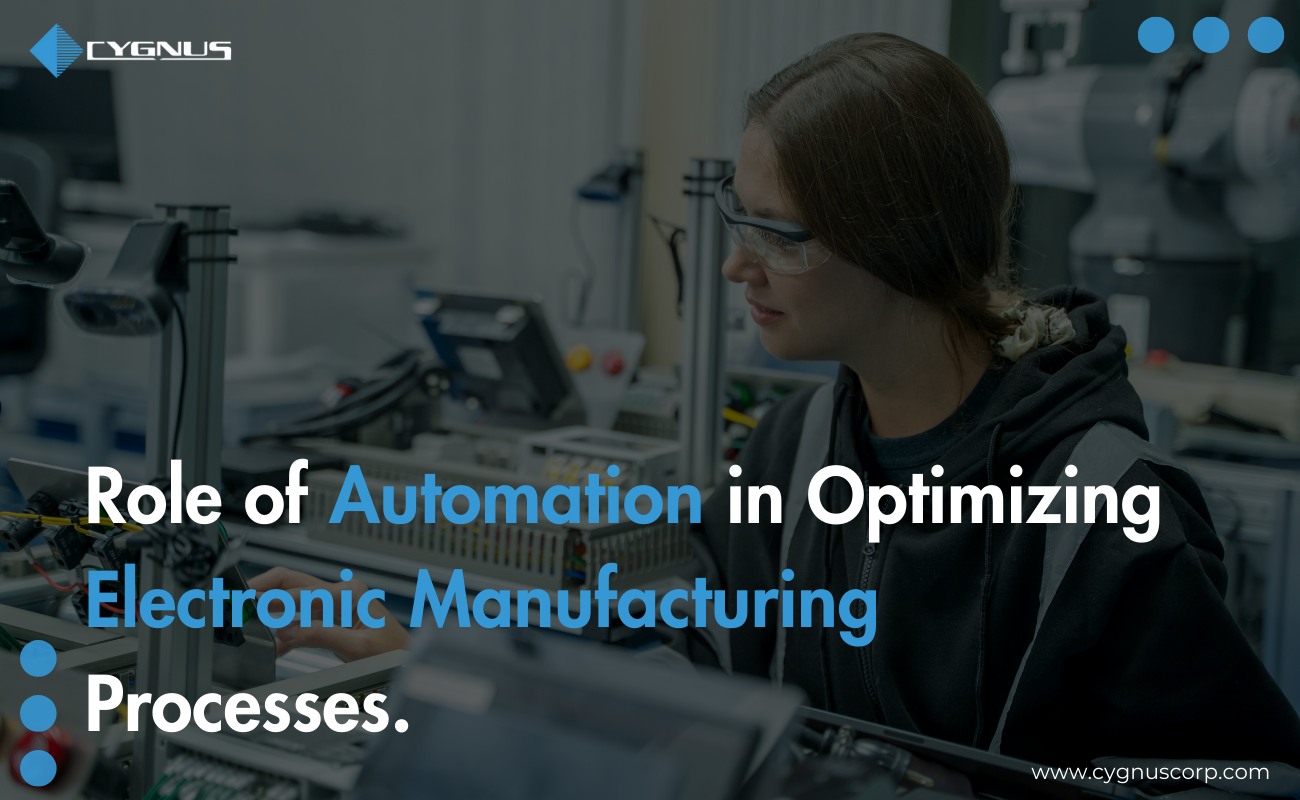We’ve entered an era where the demand for high-quality, reliable electronic products has never been higher. To meet these demands, companies are constantly seeking ways to improve efficiency, reduce costs, and enhance product quality. One of the most effective ways to achieve these goals is through automation. Machine automation has become central to the world of modern electronics manufacturing, and there’s no doubt that it’s due to play an increasingly pivotal role in the industry’s future.
So, let’s explore how automation in electronics manufacturing is transforming the industry and why it’s so crucial for the future.
What is Automation in Electronic Manufacturing?
Automation in electronics manufacturing involves using robots and machinery to perform tasks traditionally done by humans. This includes everything from assembling components on a circuit board to testing finished products for quality assurance. The goal is to streamline production processes, minimize errors, and increase overall productivity.
Benefits of Automation in Optimizing Electronic Manufacturing Processes
1. Increased Efficiency
Integrated automation can perform repetitive tasks faster and more accurately than humans. Machines don’t get tired, don’t need breaks, and can work around the clock. This may lead to significant improvements in production efficiency.
2. Cost Reduction
While the initial investment in automated technology can be high, the long-term savings are substantial. Automated systems reduce labor costs, minimize waste, and enhance energy efficiency, leading to lower overall production costs.
3. Improved Quality Control
Automated processes can perform consistent and precise tasks and reduce the risk of human error. This results in higher-quality products with fewer defects, which is crucial in the competitive electronics market.
4. Flexibility and Scalability
Automation in electronics manufacturing allows manufacturers to quickly adapt to changes in demand. Automated systems can be reprogrammed to produce different products or components. This makes it easier to scale production up or down as needed.
5. Enhanced Safety
Automation can take over dangerous tasks and reduce the risk of workplace injuries. This not only protects workers but also ensures compliance with safety regulations.
Key Areas of Automation in Electronic Manufacturing
1. Assembly Line Automation
One of the most common applications of automated manufacturing processes is in assembly lines. Robotic arms and automated conveyor systems can assemble components with high precision and speed.
For example, surface mount technology (SMT) machines can place tiny components on circuit boards with incredible accuracy.
2. Testing and Quality Assurance
Automated testing systems can quickly and accurately check products for defects. Automated optical inspection (AOI) systems use cameras and image processing software to inspect circuit boards for issues like soldering defects, component misalignment, and other flaws.
3. Material Handling and Logistics
Automated manufacturing process isn’t just about the production process itself, it also includes material handling and logistics. Automated guided vehicles (AGVs) can transport materials and components around the factory floor. This ensures a smooth flow of materials to the production line.
4. Data Collection and Analysis
Integrated automation systems can collect vast amounts of data during the manufacturing process. This data can be analyzed to identify trends, monitor equipment performance, and predict maintenance needs. By using this data, manufacturers can make informed decisions and continuously improve their processes.
Real-World Examples of Automation in Action
1.Foxconn
Foxconn, one of the world’s largest electronics manufacturers, has heavily invested in automation in manufacturing. The company uses thousands of robots in its factories to assemble products like smartphones and tablets. This has allowed Foxconn to increase production efficiency and reduce labor costs.
2.Siemens
Siemens, a global leader in electronics and electrical engineering, has implemented a highly automated manufacturing process for its programmable logic controllers (PLCs). The automated system includes robotic assembly, testing, and packaging, resulting in a highly efficient and reliable production process.
3.Tesla
Tesla’s Gigafactory is a prime example of automation in the electronic manufacturing process. The factory uses a combination of robotics and advanced manufacturing techniques to produce batteries and electric vehicles. Automation has enabled Tesla to achieve high production volumes while maintaining quality and consistency.
Challenges and Considerations
While automation in electronics manufacturing offers numerous benefits, it’s not without its challenges. Here are some key considerations that you should keep in your mind:
1. Initial Investment
The cost of implementing automated processes can be high. Companies need to carefully evaluate the return on investment (ROI) and ensure they have the financial resources to support the transition.
2. Skilled Workforce
Integrated automation requires a skilled workforce to design, program, and maintain automated systems. Companies need to invest in training and development to ensure their employees have the necessary skills.
3. Integration with Existing Systems
Integrating automated technology with existing manufacturing systems can be complex. It’s important to have a well-planned strategy to ensure a smooth transition and minimize disruptions to production.
4. Disadvantages of Automation in Manufacturing
As manufacturing processes become more automated, there is a concern about job displacement. Therefore, companies must consider the social and economic impacts of automation on their workforce and communities.
The Future of Automation in Electronic Manufacturing
The future of electronic manufacturing is undoubtedly tied to automation in manufacturing. As technology continues to advance, so we can expect to see even more sophisticated and capable automated systems.
Here are some trends to watch:
1. Artificial Intelligence (AI) and Machine Learning
AI and machine learning will play a significant role in the future of automation in electronics manufacturing. These technologies can analyze data, optimize production processes, and even predict equipment failures before they happen.
2. Collaborative Robots (Cobots)
Unlike traditional industrial robots, which are often isolated from human workers for safety reasons, cobots are designed to work alongside humans. Additionally, they can assist with tasks that require precision and strength and enhance productivity and safety.
3. Internet of Things (IoT)
IoT technology will enable greater connectivity and communication between machines and systems. This will lead to a more efficient and flexible automated manufacturing process, as well as improved data collection and analysis.
4. 3D Printing
While not traditionally considered part of automation, 3D printing is becoming an increasingly important tool in electronic manufacturing. It allows for rapid prototyping and the production of complex components that would be difficult or impossible to create using traditional methods.
Conclusion
Automation in optimizing electronic manufacturing processes is revolutionizing the industry. It has many advantages, including greater quality control, cost savings, flexibility, scalability, and safety. While there are challenges to overcome, the long-term advantages make automation an essential investment for any electronics manufacturer.
Moreover, as technology continues to evolve, the role of automation in electronics manufacturing will only grow. If you stay ahead of these trends and invest in the right technologies, you can ensure your company remains competitive in a rapidly changing industry.
However, if you’re looking for cutting-edge solutions in automated manufacturing processes, then consider Cygnus Electronics Corporation.
Contact us today to find out how our expertise can optimize your production efficiency and propel your business forward.




